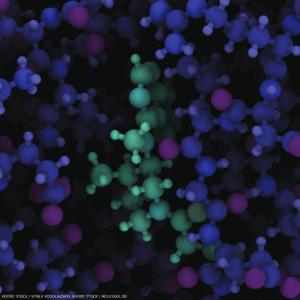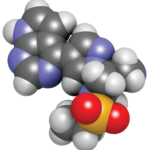 Rheumatoid arthritis (RA) is associated with an increased mortality rate, which is partially attributed to a higher risk of cardiovascular events in patients with RA than the general population. Treatment with disease-modifying anti-rheumatic drugs (DMARDs), such as tumor necrosis factor (TNF) inhibitors or methotrexate, is associated with a reduction in cardiovascular events in patients with RA.
Rheumatoid arthritis (RA) is associated with an increased mortality rate, which is partially attributed to a higher risk of cardiovascular events in patients with RA than the general population. Treatment with disease-modifying anti-rheumatic drugs (DMARDs), such as tumor necrosis factor (TNF) inhibitors or methotrexate, is associated with a reduction in cardiovascular events in patients with RA.
A comprehensive understanding of the cardiovascular safety profile of JAK inhibitors, among the most recent drugs approved for treatment of RA, is important to ensure their safe use. Concerns about the safety of JAK inhibitors were sparked by the publication of results from the ORAL Surveillance study. This large study found a higher incidence of major adverse cardiovascular events (MACEs) with tofacitinib, a JAK inhibitor, compared with TNF inhibitors.
In a large, multi-country study, Aymon et al. compared the incidence of MACEs in patients with RA treated with JAK inhibitors (i.e., tofacitinib, baricitinib, filgotinib or upadacitinib), TNF inhibitors (i.e., infliximab, etanercept, adalimumab, certolizumab or golimumab) or biologic DMARDs with other modes of action (i.e., abatacept, rituximab, sarilumab or tocilizumab). The study’s primary outcome measure was the incidence of MACE, defined as the occurrence of stroke, myocardial infarction or transient ischemic attack.
Methods
The study included patients with RA from 15 registries across Europe and Canada in the JAK-pot collaboration. Incidence of MACE was analyzed using two approaches: a within-registry analysis aggregating country-specific estimates from registers with >25 incident MACEs through meta-analysis and an individual-level data combined analysis.
The researchers used adjusted linear mixed Poisson regression to obtain incidence rate ratios (IRRs) of MACEs between treatment groups, accounting for multiple treatment courses.
Results
The study found 828 incident MACEs among 51,233 patients and included 73,008 treatment courses:
- 16,417 for JAK inhibitors;
- 35,373 for TNF inhibitors; and
- 21,218 for bDMARDs with other modes of action.
The median follow-up time for patients was 1.3 years, with most of the follow-up concentrated in the first two years of treatment. Incidence rates were 7.0, 7.6 and 11.8 per 1,000 person-years for JAK inhibitors, TNF inhibitors and bDMARDs with other modes of action, respectively. Compared with TNF inhibitors, JAK inhibitors (within-registry adjusted IRR 0.89; 95% confidence interval [CI] 0.63–1.25) had similar incidence rates of MACEs. Meanwhile, bDMARDs with other modes of action had higher rates of MACEs (within-registry adjusted IRR 1.35, 95% CI 1.10–1.66) than TNF inhibitors and JAK inhibitors.
Overall, patients with RA treated with JAK inhibitors did not have an increased risk of MACEs compared with those treated with other bDMARDs, particularly within the first two years of therapy. Additionally, the study found no increased rate of any individual cardiovascular event. The findings support similar cardiovascular risk profiles for JAK inhibitors and TNF inhibitors in patients with RA.


